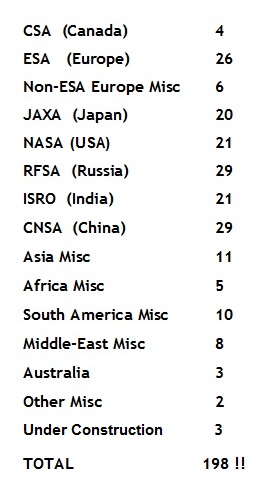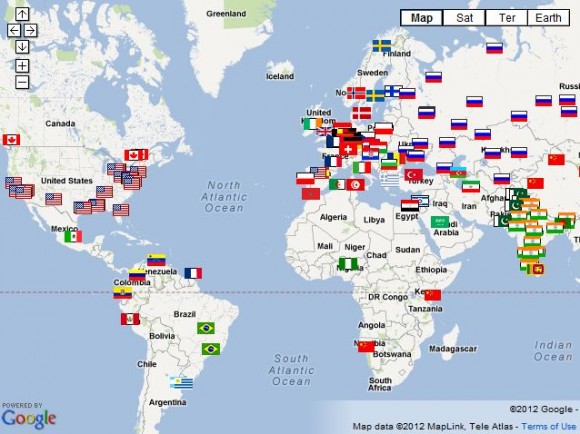Introducing a series of posts from guest blogger Heather R. Archuletta. Heather has created an interesting resource in maps for us. Sounds like she did so serving as a ‘pillownaut‘ research subject for NASA. We’ll have to ask her.
Below, is the first in the series…
When one thinks of “Space agencies,” the big players probably spring to mind: NASA in America and Roskosmos in Russia. I started with those two when I first had the idea to compile a Google Map of all space centers – but I had no idea of the adventure ahead of me.
I thought I would research a few dozen sites. Turns out, 62 nations of the world have space agencies, spread out over nearly 200 flight centers, research hubs, manufacturing facilities, test stands, space ports, launch pads, and mission control centers!
The interactive map and master list includes links to every space agency website!
Once I had charted NASA and RFSA, I moved on to the Japanese Aerospace Exploration Agency (JAXA) and the Chinese National Space Administration (CNSA). These runners-up to the leaders had far more sites than I imagined! Well, there went my plans for a road trip.
I began the project as a gathering of possible vacation itineraries, but it morphed into a tracking tool of sorts, showing how huge the space industry has truly become.
Once the big players in Moonwalking and Earth-orbiting were tagged, I started moving through the space agencies with space probes or satellite capabilities, such as the ISRO (Indian Space Research Organization), the Canadian Space Agency (or l’Agence Spatiale Canadienne), and the amazing European Space Agency (ESA) – an anomaly in that it includes 19 government programs all working together (Austria, Belgium, Britain, Czech Republic, Denmark, Finland, France, Germany, Greece, Ireland, Italy, Luxembourg, the Netherlands, Norway, Poland, Portugal, Spain, Sweden, and Switzerland).
 Link: http://pillownaut.com/spacemap/spacemap.html
Link: http://pillownaut.com/spacemap/spacemap.html
Each of the non-English-speaking agencies have both English and their native languages noted in their names and on their web sites. I know quite a bit of French and Italian, and have taken Russian classes – so romance languages and Cyrillic were workable.
The tough part came when I realized I needed to learn many Chinese and Japanese characters just to find addresses of space sites! I also learned the Devanagari alphabet for Hindi, and many mapping or space industry terms in Spanish, Swedish, Bulgarian, Brazilian Portuguese, Korean, Thai, and Arabic.
Check out all the flag markers, and look what the space-faring nations have to offer!
Heather R. Archuletta
http://pillownaut.blogspot.com
https://bedreststudy.jsc.nasa.gov/






































